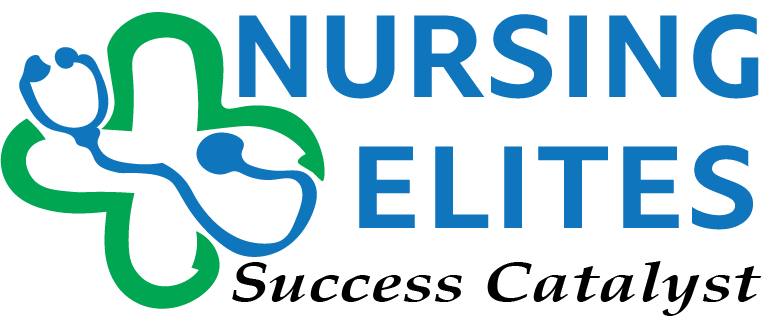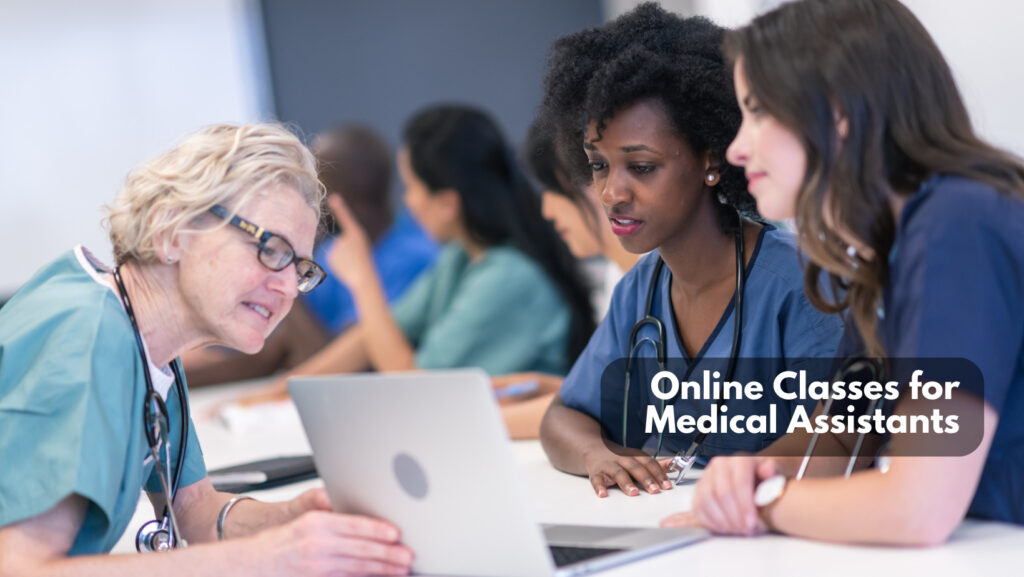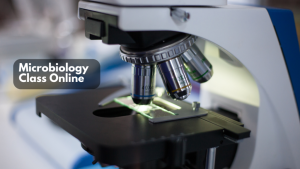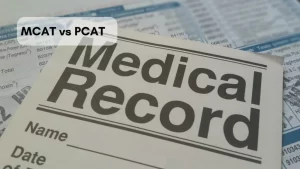Employment in medical assistance is projected to grow faster than the average for all occupations in the next nine years. Currently, the U.S. records an average of 114,600 new job openings for medical assistance annually, with median pay at $38,270. Coincidentally, the number of students enrolling in online classes for medical aid is hitting a record high. To get certified, these students only need 15 credits from experiential, hands-on learning to supplement 25-60 credits from virtual learning. Our nursing experts discuss what online classes for medical assistants entail. Learn the curriculum overview, contact hours, accreditation and certification, and how to seek medical assistant exam help.
Online Classes for Medical Assistants: Course Overview
Online classes for medical assistants are part of a hybrid course, equipping learners with essential skills needed to thrive as medical assistants. This course prepares students for the Certified Clinical Medical Assistant (CCMA) exam. The classes leverage the convenience and flexibility of online learning by incorporating interactive learning tools and focused study materials to enhance retention. The course dives into the tools, technologies, and concepts prospective medical assistants need to match the industry’s standards. Learners can access expert instructors, join like-minded students, and gain the certifications necessary to become fully-fledged medical assistants.
Online Classes for Medical Assistants: The Course Structure, Content Areas, and Credit Hours
The online classes for medical assistants cover skills and concepts necessary for complete outpatient care. Learners should be prepared enough to assist mid-level nurses, licensed nurses, and physicians at the course’s end. The course structure varies depending on the school. However, it should comprise 60 credit hours required for certification. It must also cover the following fundamental content areas.
The General Anatomy and Physiology of a Human Body
Medical assistants should have a profound understanding of human anatomy and physiology. This course area delves into the skeletal, muscular, respiratory, digestive, respiratory, nervous, and other human body systems. It enhances the learner’s understanding of how various systems and organs connect to sustain life. It also provides foundational knowledge of multiple metabolisms and the fundamental principles governing the body’s structure and functions.
Medical Assistance During Minor Surgical Procedures
Medical assistance during minor surgeries forms the groundwork of the medical assistance profession. This content area focuses on implementing proper techniques that ensure adequate aseptic conditions during minor surgery. By the end of the contact hours, a learner must know all medical assistance techniques like sterile draping and proper handling of instruments. Medical assistance also covers wound care, documentation, communication, and emergency procedures.
Patient Preparations and First Aid Procedures
Medical assistants should be able to prepare patients for minor medical procedures and administer first aid where appropriate. The first section of this content area focuses on competencies for patient preparation. It includes understanding medical histories, patient anxieties, and proper consent. Medical assistants also learn patient cooperation and how to foster trust by developing a supportive environment. The first aid procedures cover responses by medical assistants during an emergency. It covers the role of trained medical assistants in assessing injury’s severity, prioritizing care, and basic interventions like wound care.
Patient Therapies and Interventions
Fully-fledged medical assistants should have extensive therapeutic skills needed for compassionate patient intervention. This content area emphasizes assisting nurses to understand the patient’s medical history, current conditions, and urgent needs. Learners must also know how to use various diagnostic tools in patient caregiving. The last portion of the course covers different treatment modalities, support strategies, and physical therapies. Medical assistants must know how to help patients adhere to these modalities. The content area covers medication prescriptions, vital signs monitoring, and treatment plans.
Identification of Processes and Symptoms and their Treatments
Medical care assistants must be able to recognize particular diseases, their affiliated symptoms, and their treatment options. This content area builds on anatomy and physiology to help learners understand normal vs. abnormal physiological processes. It delves deeper into the manifestations of illnesses and their common signs. The content area extends to the patient therapies and interventions by explaining the treatment modalities for particular diseases.
Front Office and Laboratory Administrative Duties
Medical assistance is only complete with covering administrative duties in front office and laboratory settings. This content area explores the multi-faceted administrative functions of a medical assistant, the essential skills, and ethical care. It explains roles like patient appointment scheduling, record management, effective communication, patient confidentiality, inquiries, logistics, and insurance. Medical assistance lab duties define supportive laboratory operations like sampling procedures, specimen handling, and logistics.
Online Classes for Medical Assistants: Accreditation and Certifications
Knowledge from online classes for medical assistants honed competencies needed across various healthcare designations. In addition to the CCMA, the classes open doors to the following fields:
- The Registered Medical Assistant (RMA) certification and licensing
- The Clinical Medical Assistant Certification (CMAC)
- The National Certified Medical Assistant Certificate (NCMA)
- The Certified Phlebotomy Technician (CPT) Certification
Remember that state requirements for each designation differ. Learners may be required to take additional classes for state licensing in RMA, CMAC, NCMA, and CPT.
Where to Seek Medical Assistant Exam Help Services
The most challenging part of becoming a licensed medical assistant after completing the online classes for medical assistants is passing the CCMA test and other state licensing examinations. Bestexamhelponline offers comprehensive help with CCMA, RMA, CMAC, NCMA, and CPT examinations for all prospective medical assistants. Hire top professors or graduates in our database to ace your exam with A+ grades.




